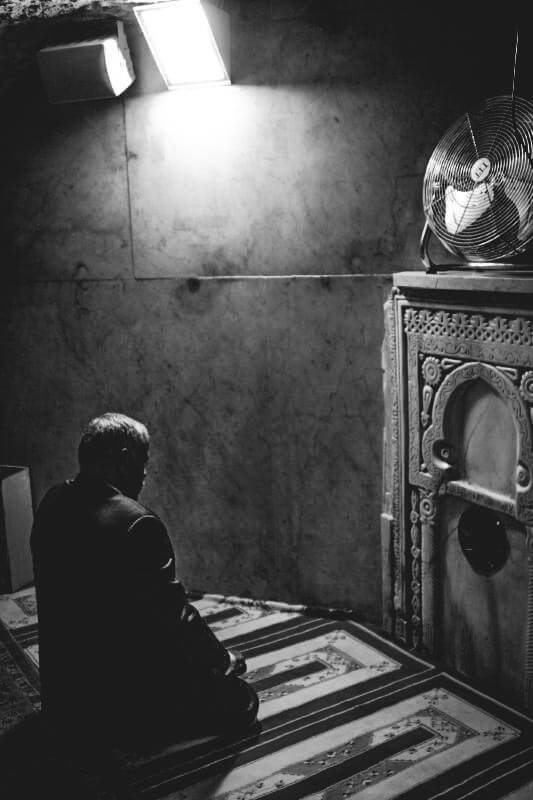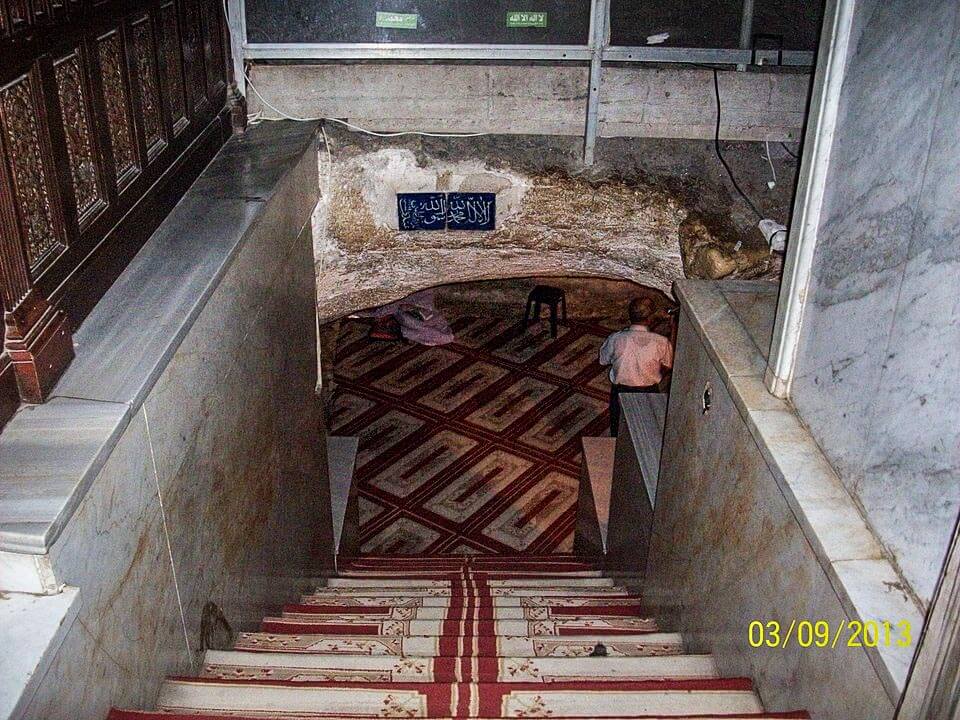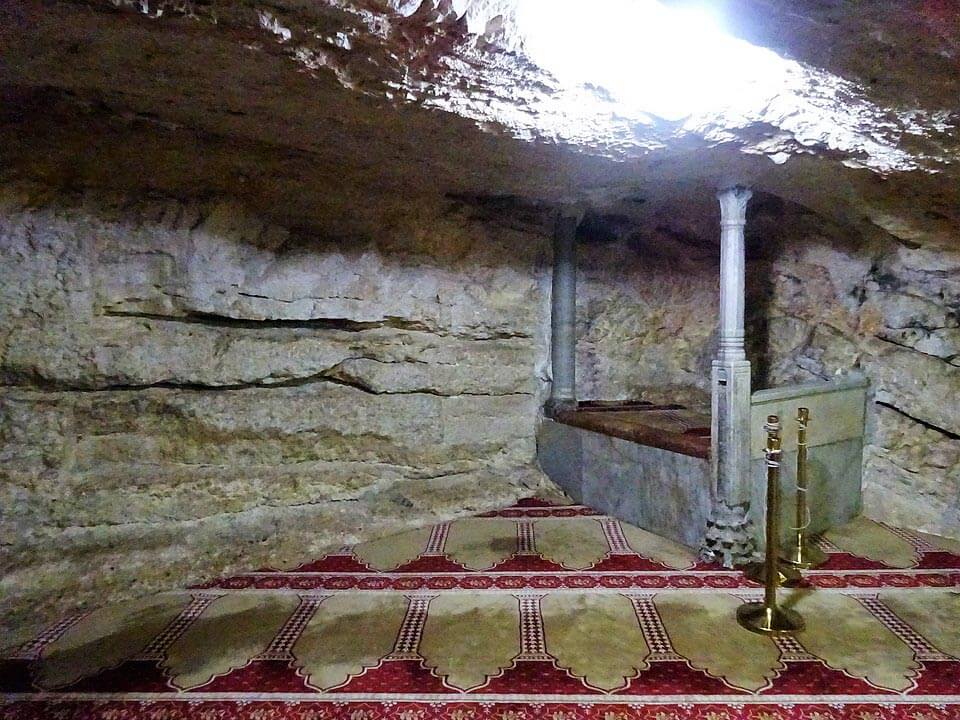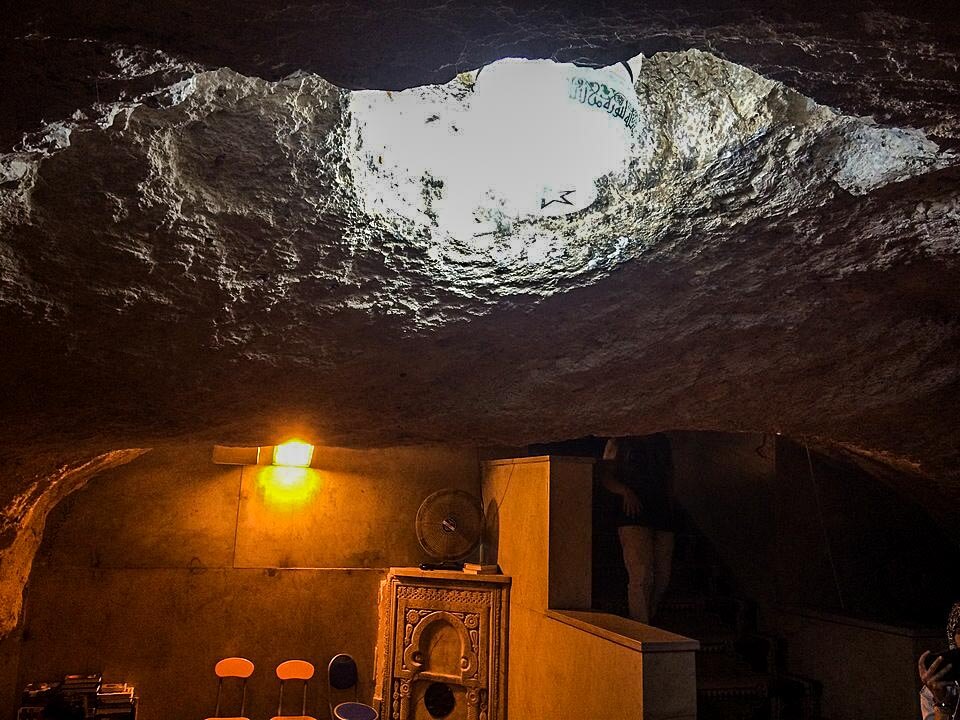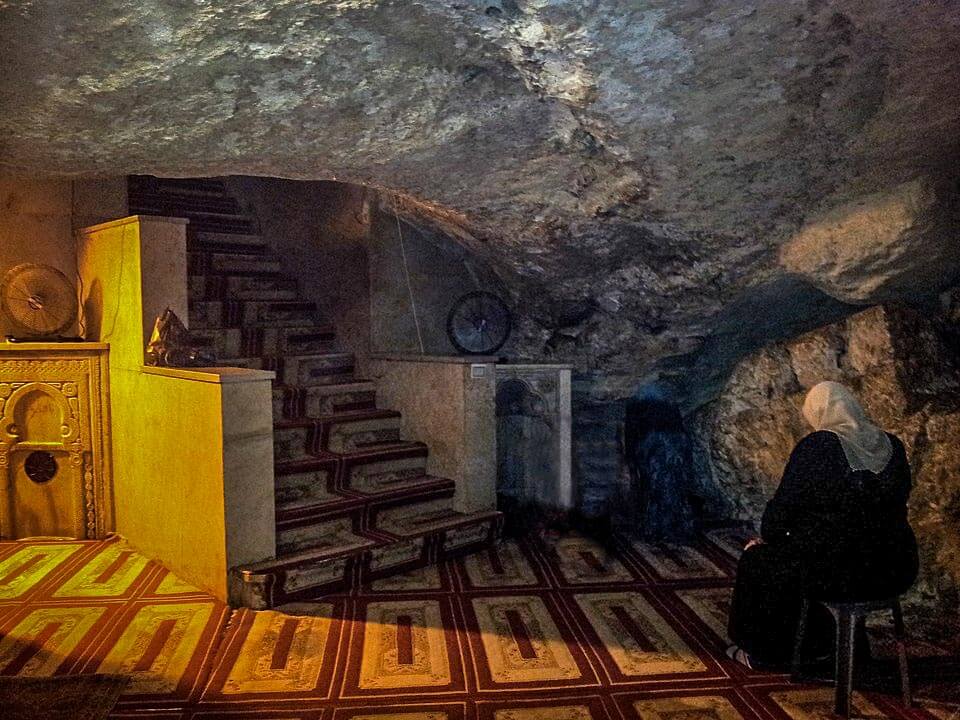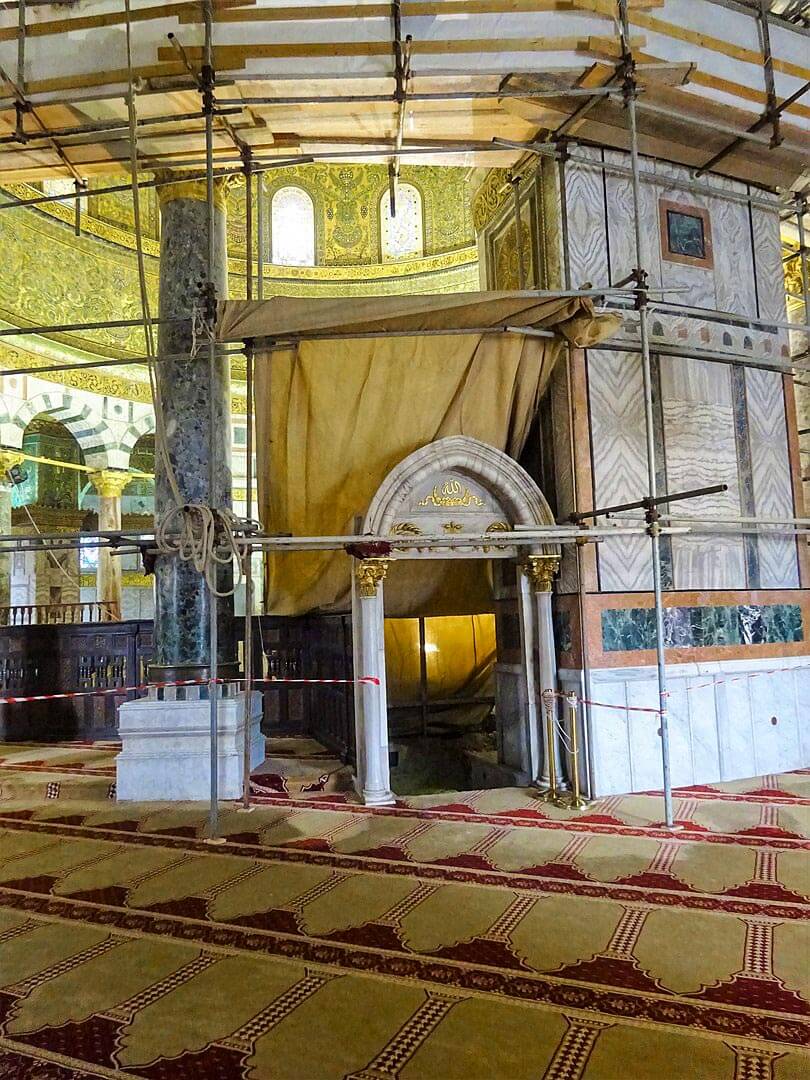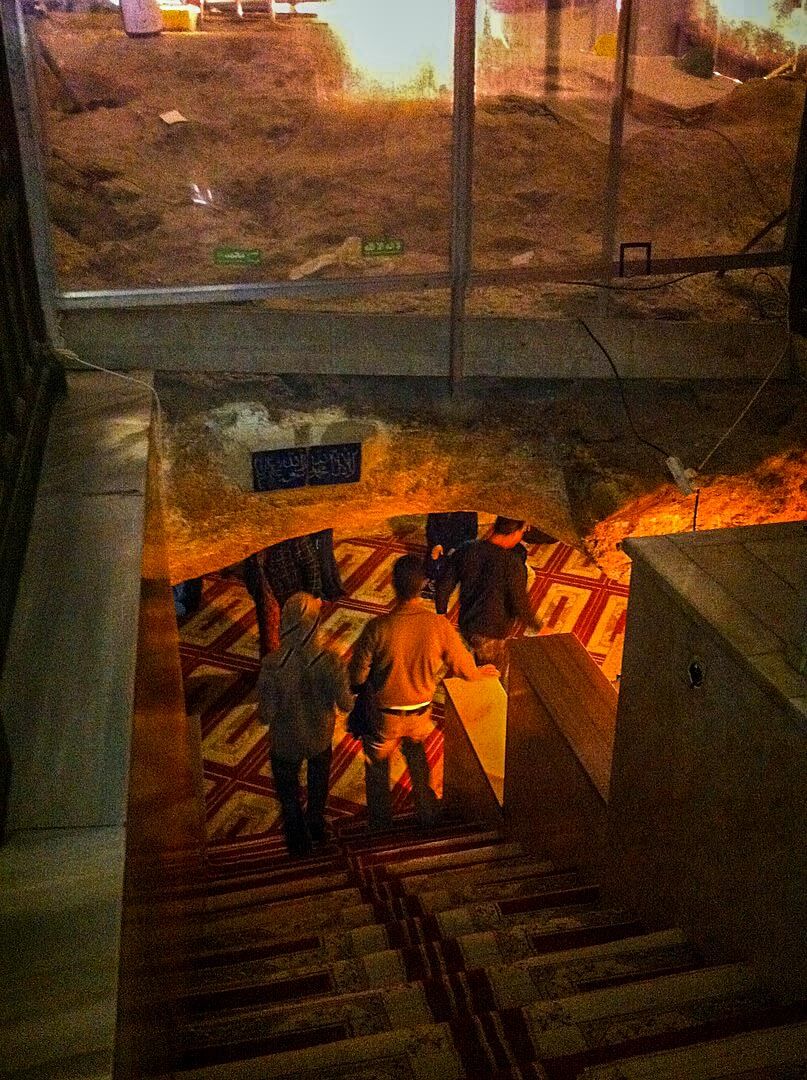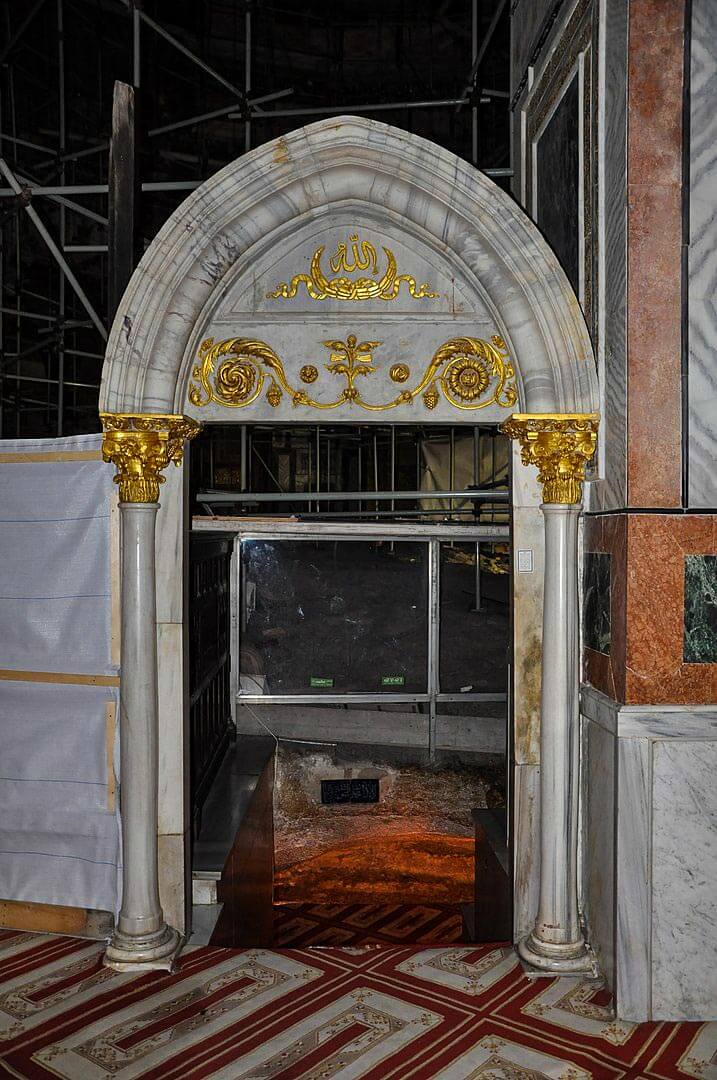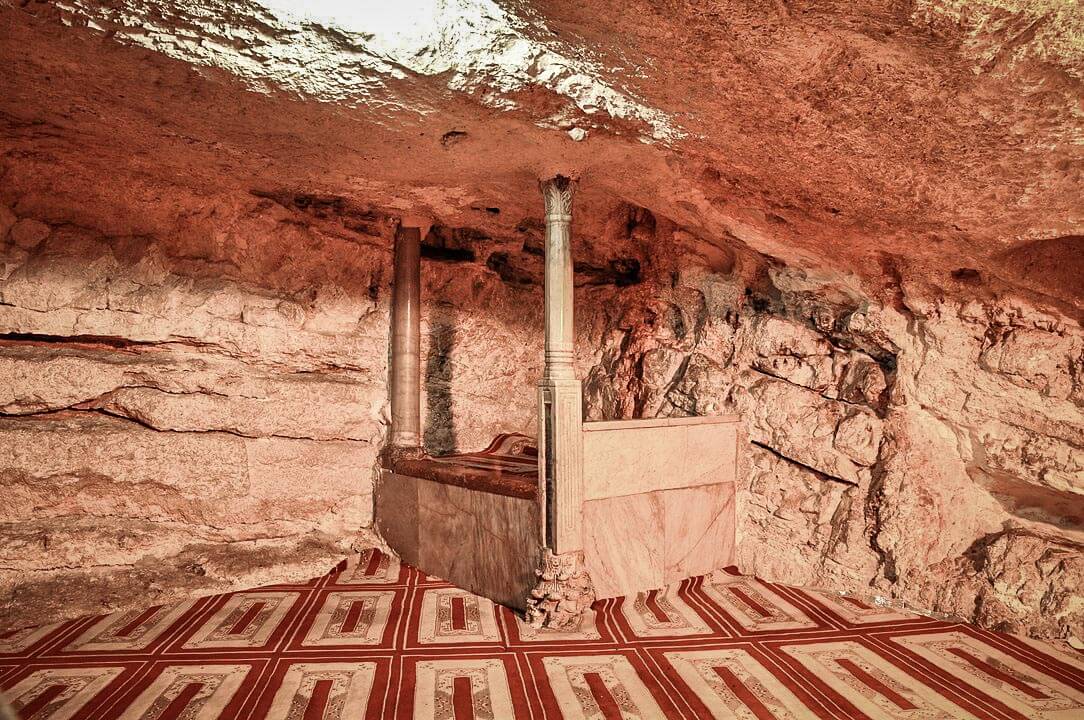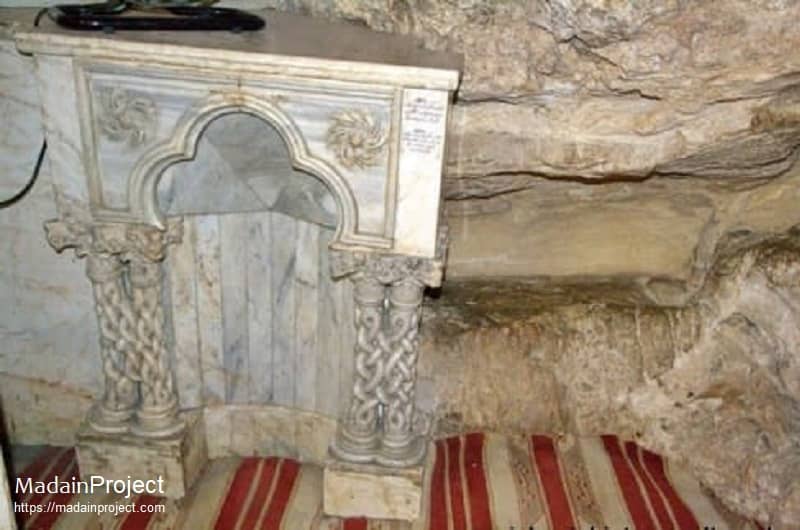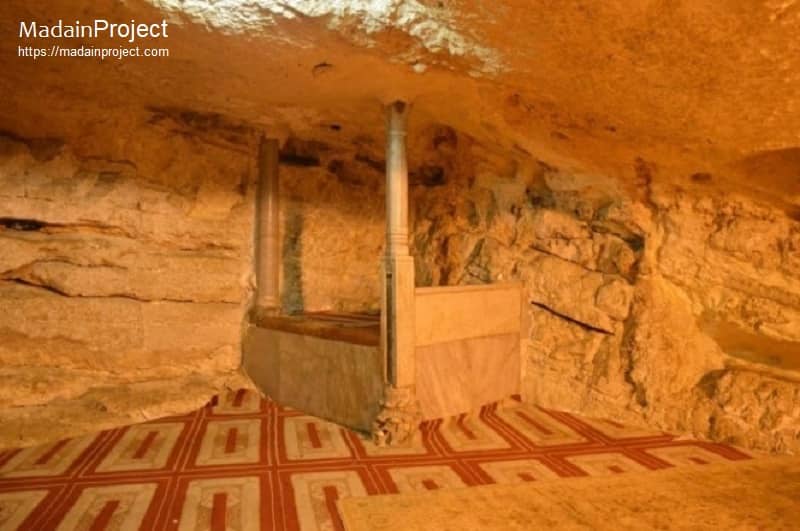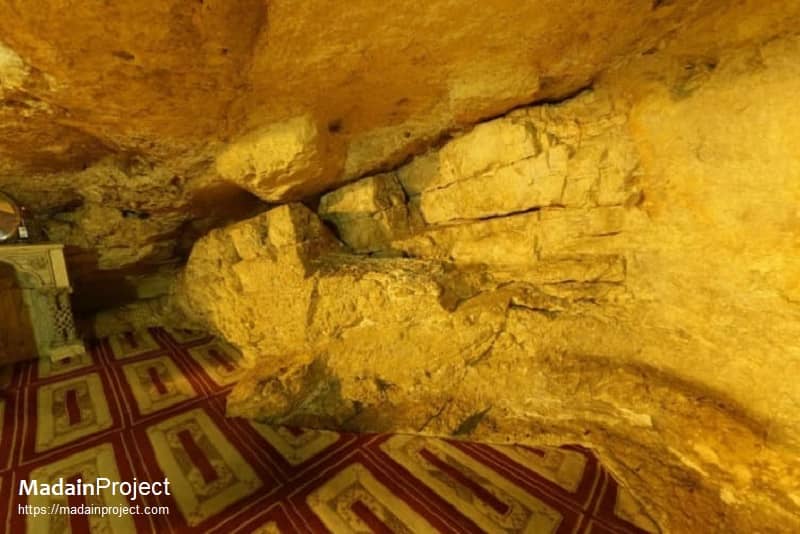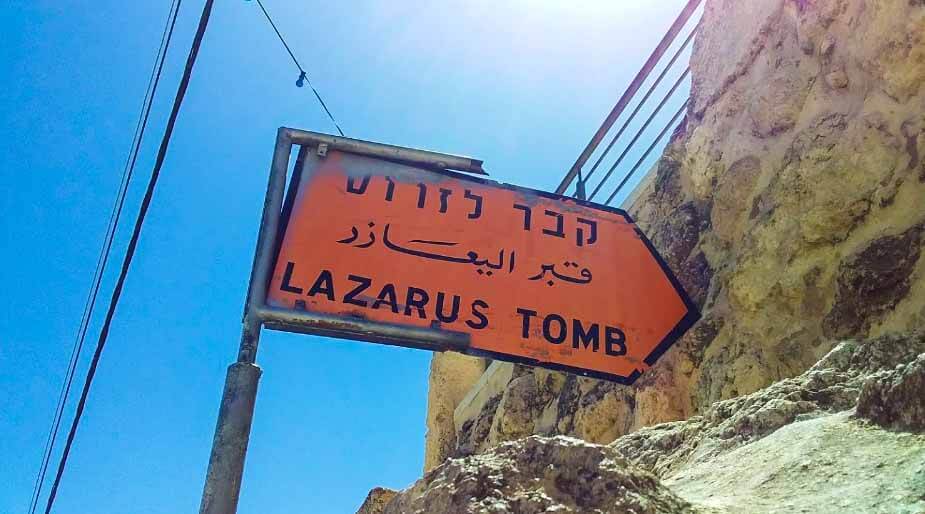Jerusalem, Palestine
Mihrab of Hz. Dawud عليه السلام
Mihrab of Hz. Ibrahim عليه السلام
Mihrab of Hz. Khidr عليه السلام
Mihrab of Hz. Sulaiman عليه السلام
Coordinates: 31.778025, 35.235406
The Well of Souls (Pit of Souls, Cave of Spirits, or Well of Spirits in Islam), is a partly natural, partly man-made cave located inside the Noble Rock under the Dome of the Rock shrine in Jerusalem.
The name “Well of Souls” derives from a medieval Islamic legend that at this place the spirits of the dead can be heard awaiting Judgment Day.
The name has also been applied to a depression in the floor of this cave and a hypothetical chamber that may exist beneath it.
The cave chamber is roughly square, about 6 meters on a side, and ranges from ≈1.5 to 2.5 m (4 ft 11 in to 8 ft 2 in) high.
Mihrabs in the Well
Mihrab dedicated to Hz. Ibrahim عليه اسلام is in the northern corner of the chamber. The ceiling of the cave appears natural, while the floor has been long ago paved with marble and carpeted over.
Mihrab dedicated to Hz. Khizr عليه اسلام is located in the north-west corner of the chamber.
The mihrab dedicated to Hz. Dawud عليه اسلام, is located in the southern corner of the chamber. It is a trefoil arch supported by miniature marble twisted-rope columns.
There is a mehrab dedicated to Hz. Sulaiman عليه اسلام as well. According to some scholar, this is one of the oldest mehrabs in the world, dating back at least to the 9th century.
Some even suggest that it dates back to the 7th century and to the time of ‘abd ul-Malik ibn Marwan, builder of the Dome of the Rock — making it the oldest in the world — but this is disputed.
One Traditions of Hz. Umar رضي الله عنه
The entrance to the cave is at the southeast angle of the Foundation Stone, beside the southeast pier of the Dome of the Rock shrine.
Here a set of 16 new marble steps descend through a cut passage thought to date to Crusader times. On the way down, bedrock masses project in towards the stair; the one to the right is called “the tongue”.
Hz. Umar رضي الله عنه is thought to have made salutation to the stone.
He exclaimed, “As Salamu Alaikum” (“Peace be unto thee”), and the stone replied, “Wa Alaikum Assalam wa rehmatullah” (“Peace be to thee, and the mercy of God”).
Some other traditions regarding the Well
The exposed bedrock directly under the dome — known as the Noble Rock to Muslims — is the spot from which Islamic tradition indicates Prophet Muhammad ﷺ ascended to heaven, and according to a medieval Islamic tradition, the Stone tried to follow Prophet Muhammad ﷺ as he ascended, leaving his footprint here while pulling up and hollowing out the cave below.
The impression of the hand of the Hz. Jibrael عليه اسلام, made as he restrained the Stone from rising, is nearby.
Muslim tradition also places it at the center of the world and over a bottomless pit with the flowing waters of Paradise underneath. A palm tree is said to grow out of the River of Paradise here to support the Stone.
Hz. Nuh عليه اسلام is said to have landed here after the Flood. The souls of the dead are said to be audible here as they await the Last Judgment, although this is not a mainstream view in Sunni Islam.
These are some of the traditions regarding the Well, however only Allah knows how many of them is true.


